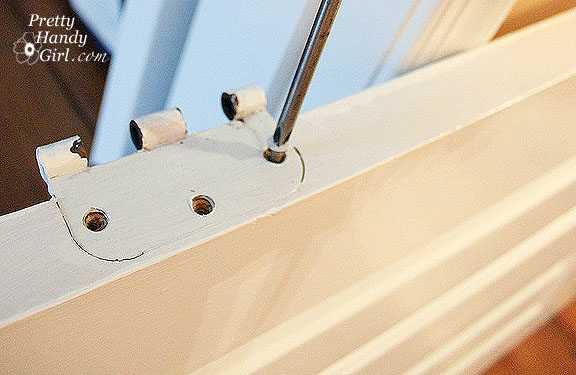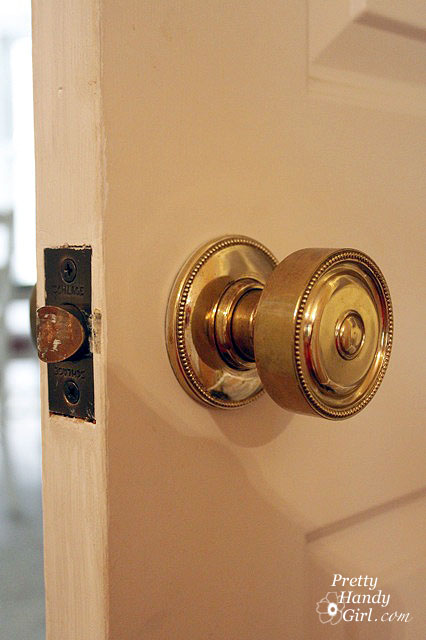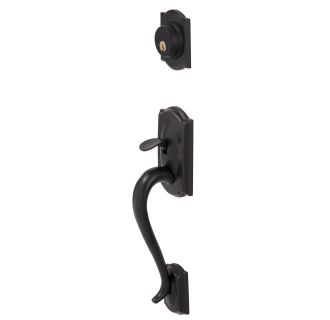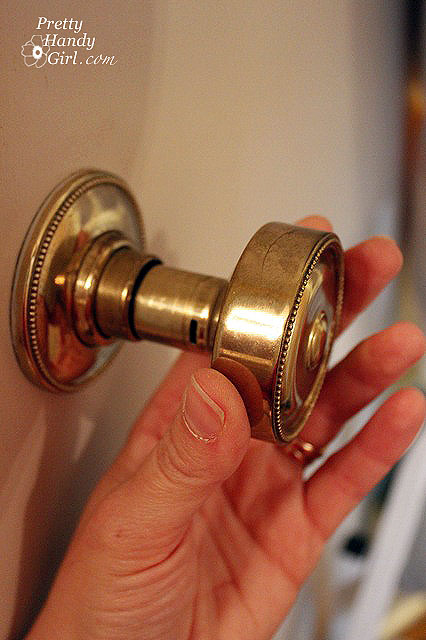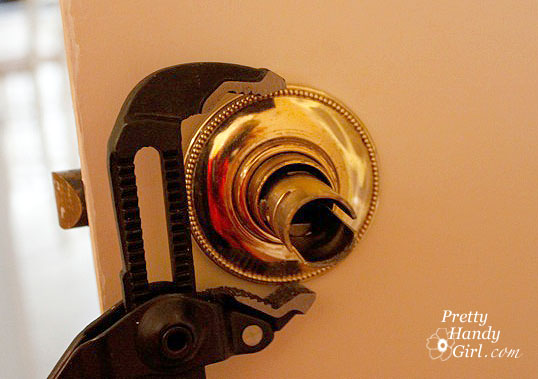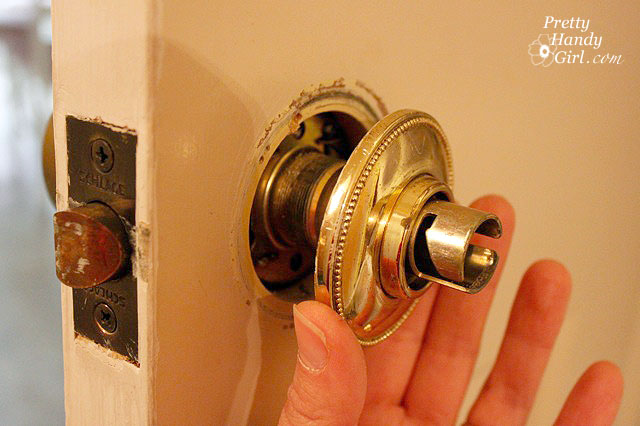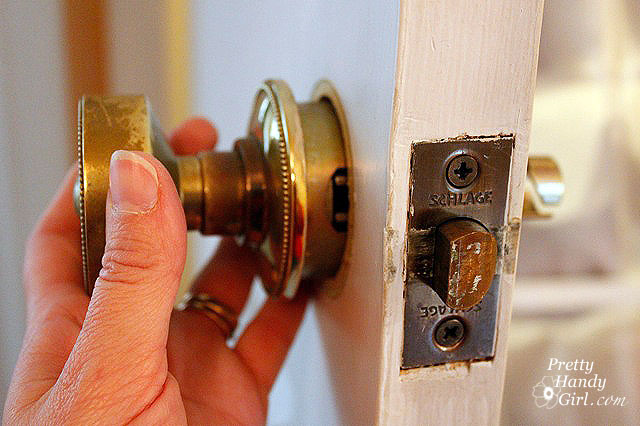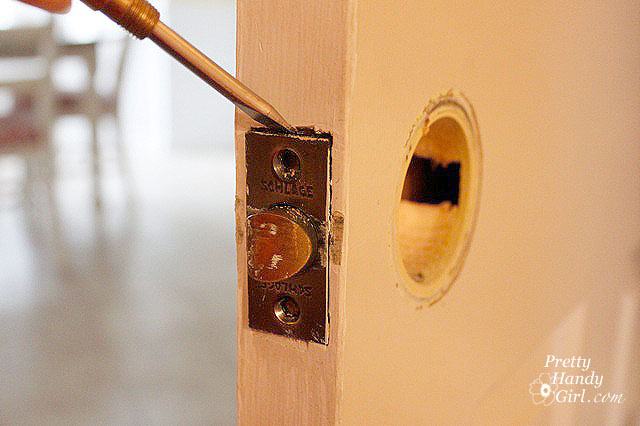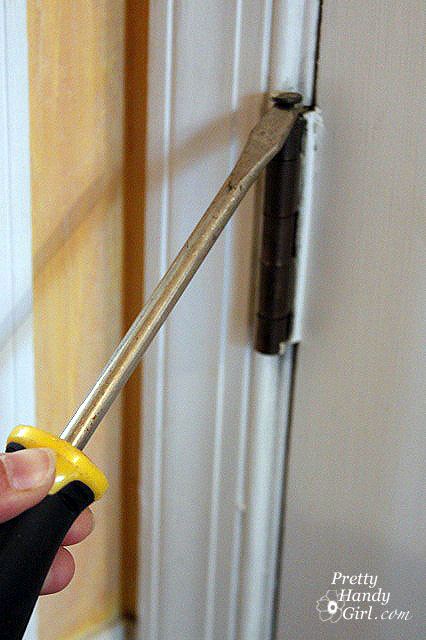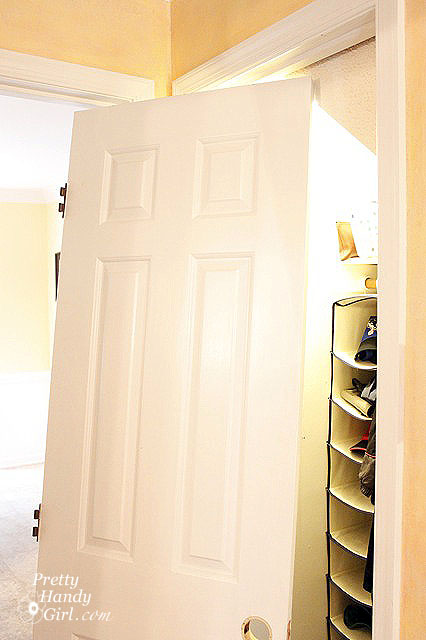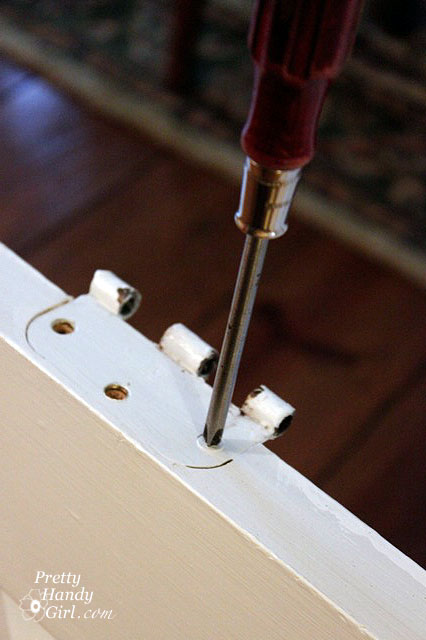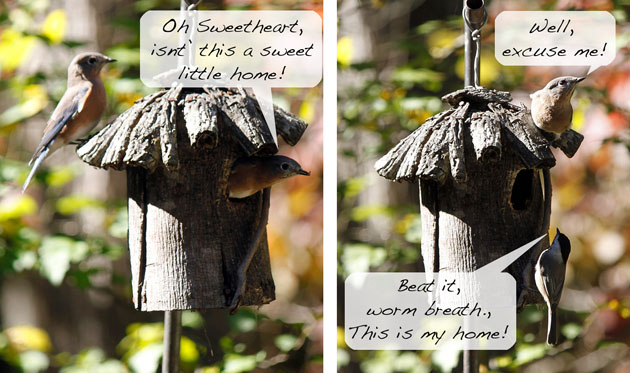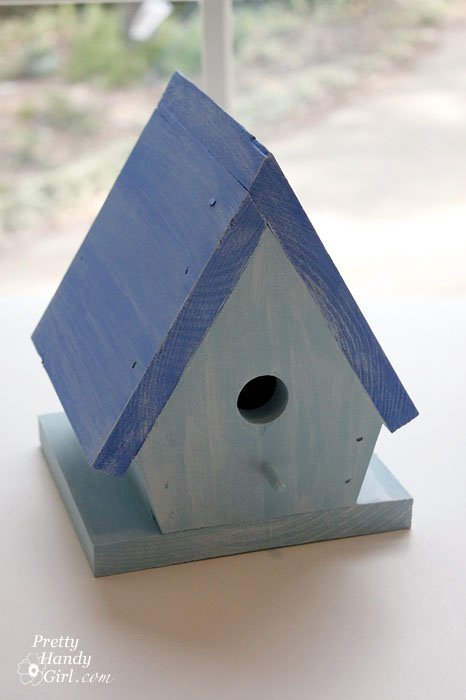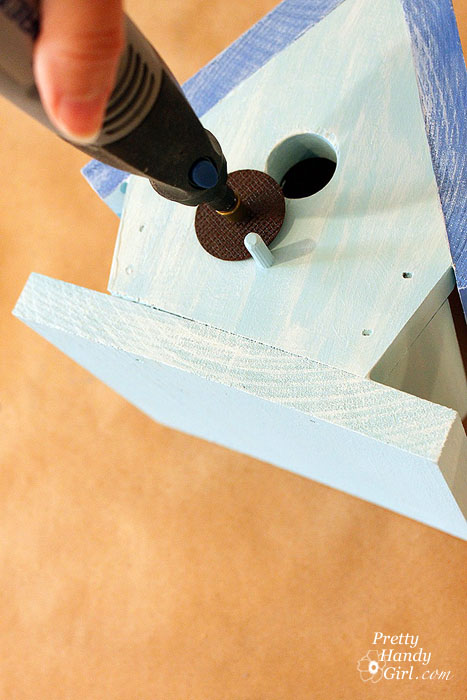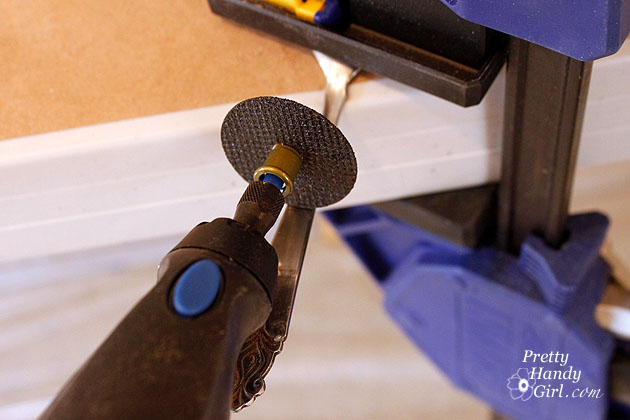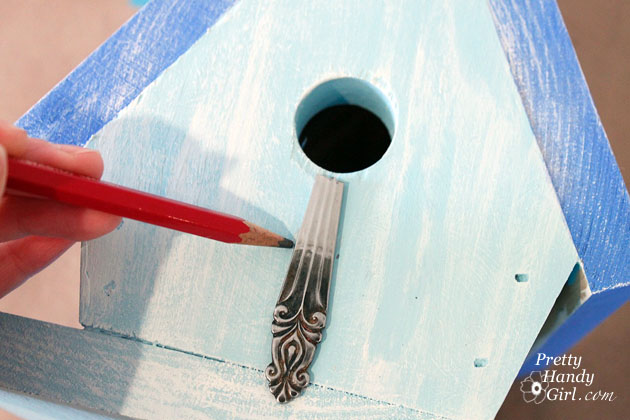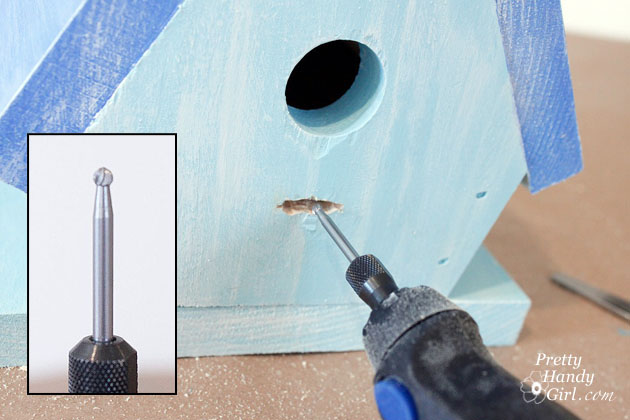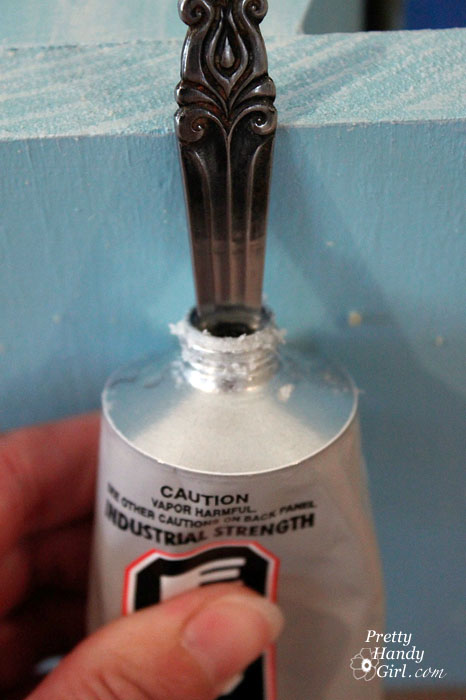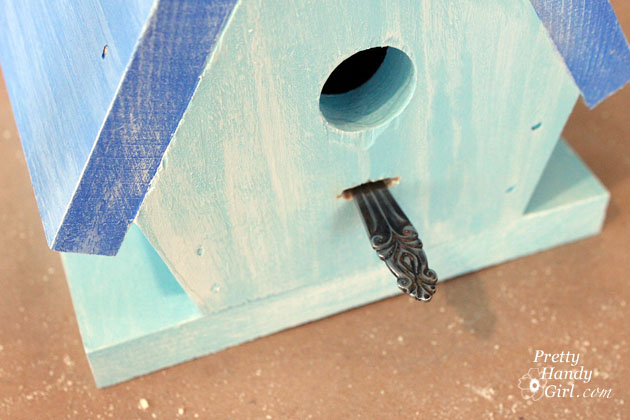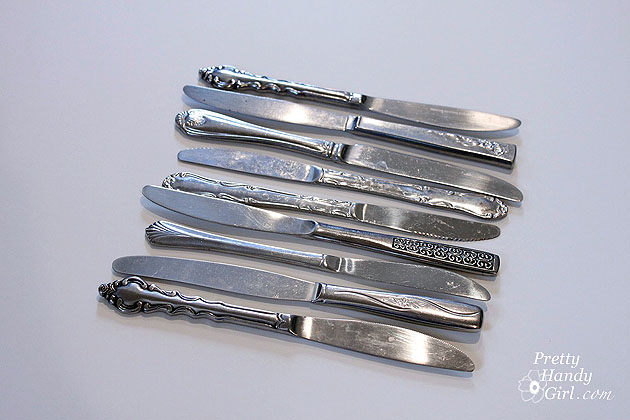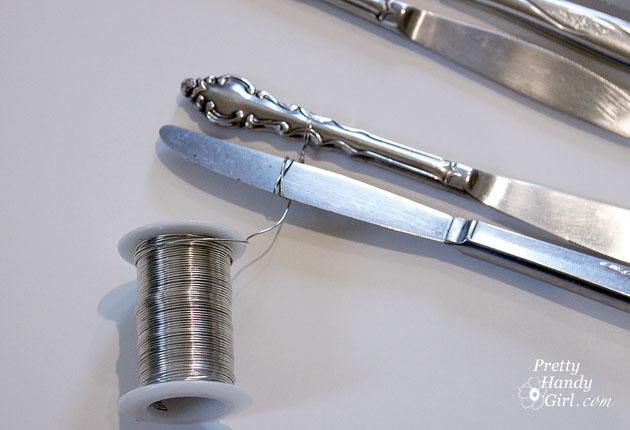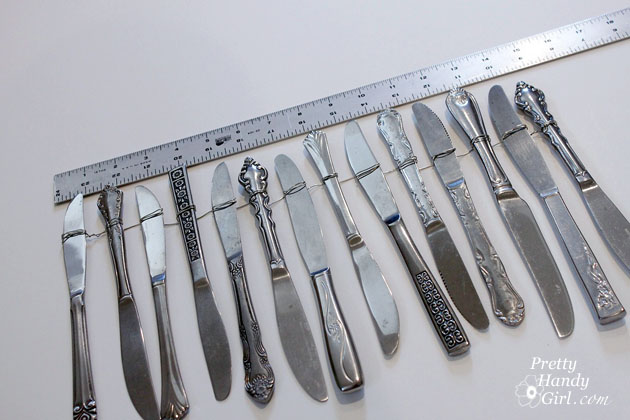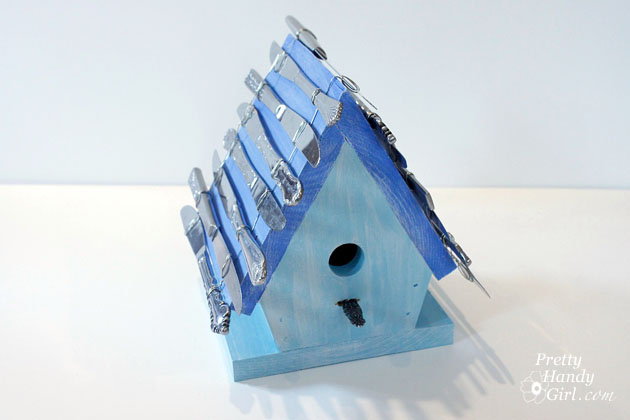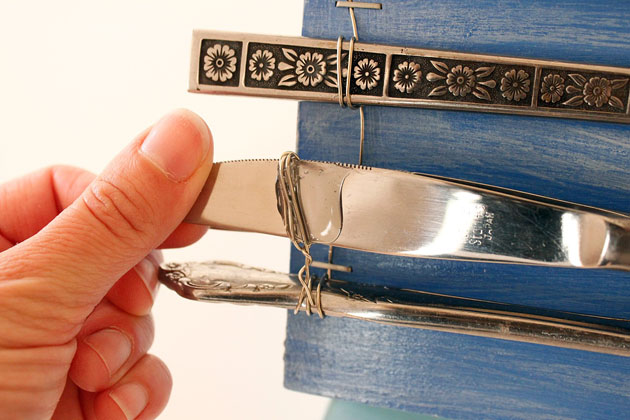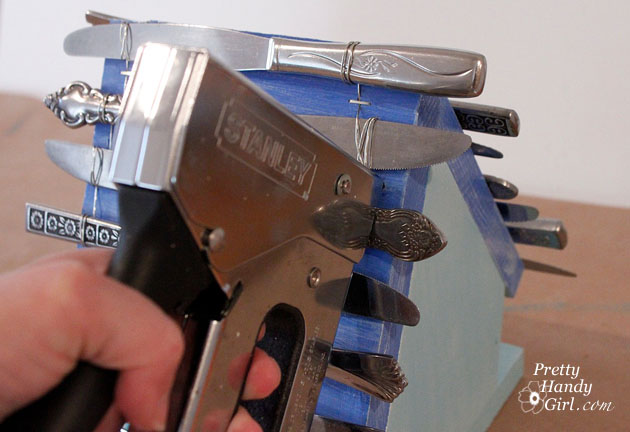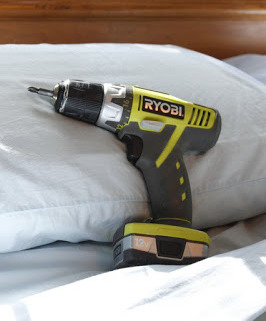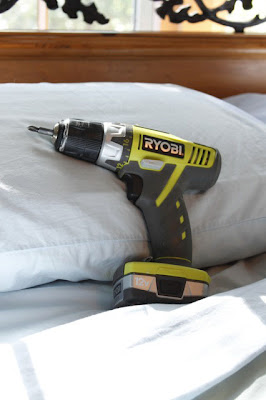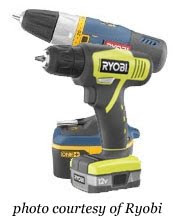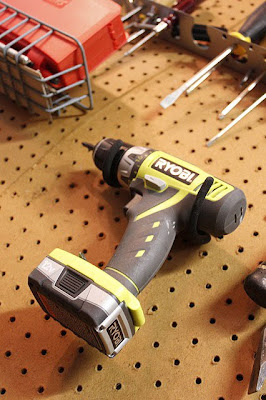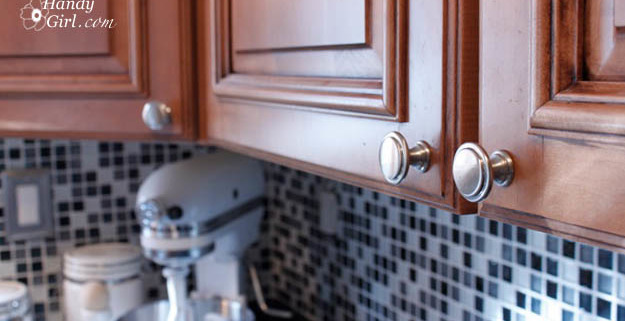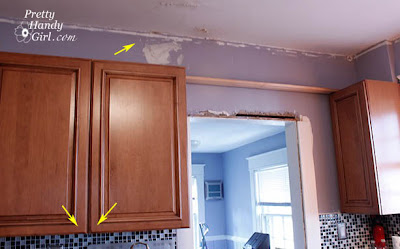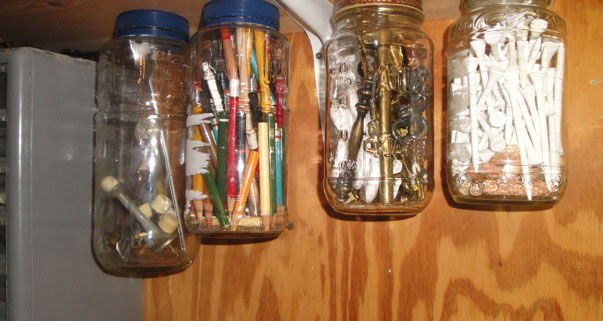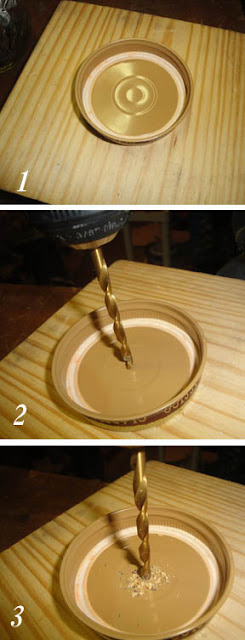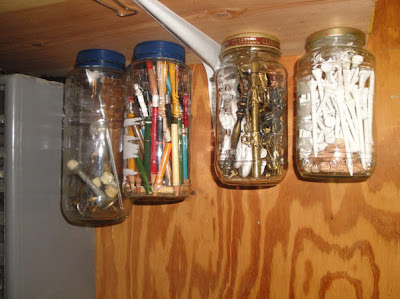Removing a door’s hardware (knobs, latch assembly, hinges) is really a piece of cake if you know what you are doing.
There are several reasons you might need to remove a door from its hinges:
- The lock is broken and you can’t open the door.
- You want to replace your door.
- You want to replace the hinges.
- Your six year old was warned that if he slams his door one more time he will lose the door (true story).
- You want to repaint the door.
When I decided to give my downstairs half bathroom a makeover, I knew I needed to paint the door as well. The easiest way to repaint a door is to remove it from the hinges, remove all the hardware, and lay it flat on sawhorses and paint horizontally.
Before I show you how to paint the door, I will share with you how to remove the door, hinges, and the door knobs (or locksets if it has a key hole). How to remove the locksets is a helpful skill to learn should you wish to replace your door knobs, deadbolts or locksets.
Letting you in on a little secret: Speaking of replacing locksets, did you know that if your house has several different locks you can have them rekeyed to just one key as long as they are all the same brand? When we moved into our home we had three different locks (2 Schlage and 1 Kwikset) and keys to only ONE lock! Arrggghhhh! Unfortunately, I didn’t have the keys for either Schlage locks.) But, I really wanted to change the locks for the whole house. When I got a quote from a locksmith, I nearly passed out. $250 to get all our locks to match and to cut a few spare keys!
I thanked them and hung up. So, here is what I did. I bought one new Schlage lockset (handles and deadbolt set) for the Kwikset door. Then I took the locksets off the other two doors and brought them to a local locksmith (Busse’s Lock Service in Raleigh.) They were able to rekey both locks using my new Schlage key. The cost was under $50!
Later when the old lock on our front door broke, I ordered new ones from Handlesets.com (they sell all types of door hardware) and the customer service rep helped me enter the code from our master key when I placed the order. That way my new locks would match the rest of our house. Best of all they didn’t charge extra to for that service!
Sorry for the diversion, but I really wanted to let you in on that little secret.
Removing the Door Handles and Latch Assembly:
There are several types of door handles, you will need to inspect yours to determine how to remove it. Most door handles have screws on the interior side (for safety reasons, you definitely want them on the interior) that you unscrew to release the handles. Our door handles are a little different, but almost as easy to remove.
Insert a flat head screwdriver into the little slot on the side of the handle.
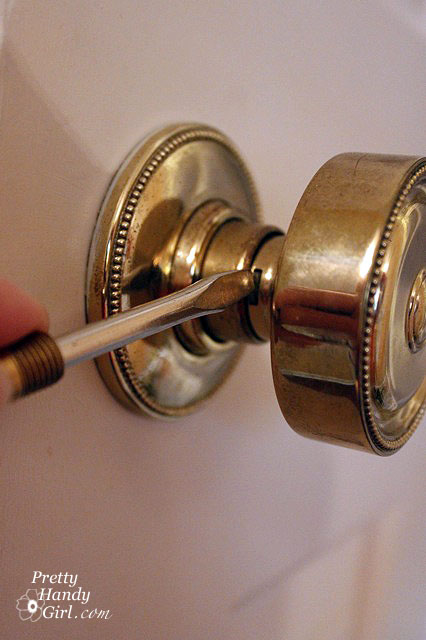
Pull the handle out and away from the door until it releases.
Unscrew the collar (also called a trim piece or escutcheon – yup, there is that word again!) that is up against the door until it comes off. You might need to use pliers to coax it free.
When it releases from the threads, remove the collar (ring, trim piece, escutcheon, WHATEVER.)
Gently pull the other handle off.
To remove the latch assembly, unscrew the two screws above and below the latch.
Gently pry the latch assembly out.
And remove it being sure to keep the screws with the latch.
Removing the hinges:
If you have the type of door hinges that the pin can be removed from, follow these instructions. If not, you will have to unscrew the hinges from your door (but don’t worry, I’ll show you how to do that in a minute.)
Removing the hinge pin is a snap. I use a flat head screwdriver and a hammer. Set the screwdriver just below the head of the pin and tap it lightly with the hammer until the screwdriver can fit below the head. If you can’t get the screwdriver under the head of the pin, insert the screwdriver into the bottom of the hinge and tap the bottom of the pin up slightly. Then angle the screwdriver end up and the handle down. Continue to tap on the screwdriver handle with the hammer until you can release the pin*.
*Oh, and before you remove all the pins, you may want to ask someone help hold the door while you remove the pins from the other hinges. Not that I’ve ever made that mistake (uh, okay, maybe I did.)
Remove the other two hinge pins and gently pull the door off the hinges.
Use a screwdriver or cordless drill with a screwdriver bit to remove the hinges from the door and door frame if you are painting the trim as well.
I ran into a few painted over screws that I couldn’t turn. Here is how to deal with those little buggers.
Lay your door on it’s side with the hinge facing up. Fit a screwdriver into the screw slots as best you can.
Then use a hammer to bang on the other end of the screwdriver.
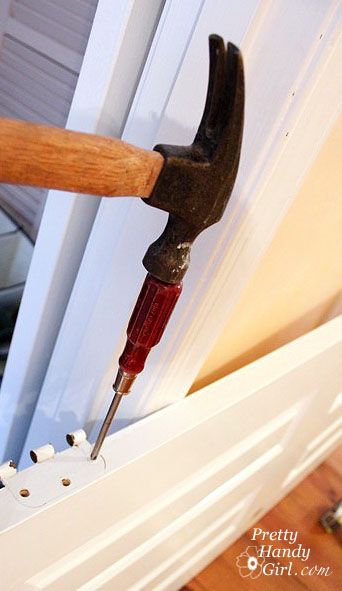
This will either crack the paint or make enough of an indentation that you can turn the screw.
Be sure to keep all your hinges and screws in a separate bowl or bag.
Now you are ready to paint your door or paint your hardware (Like Beckie at Infarrantly Creative did HERE) or both! More tutorials to come.

